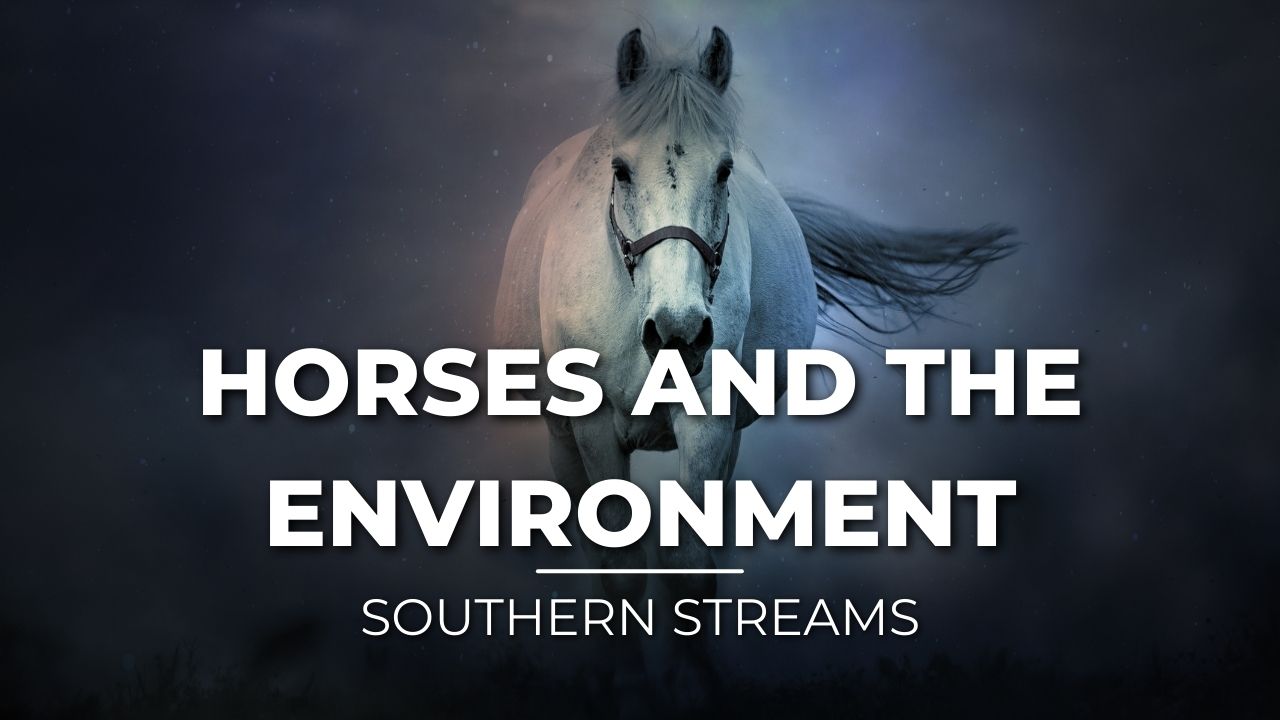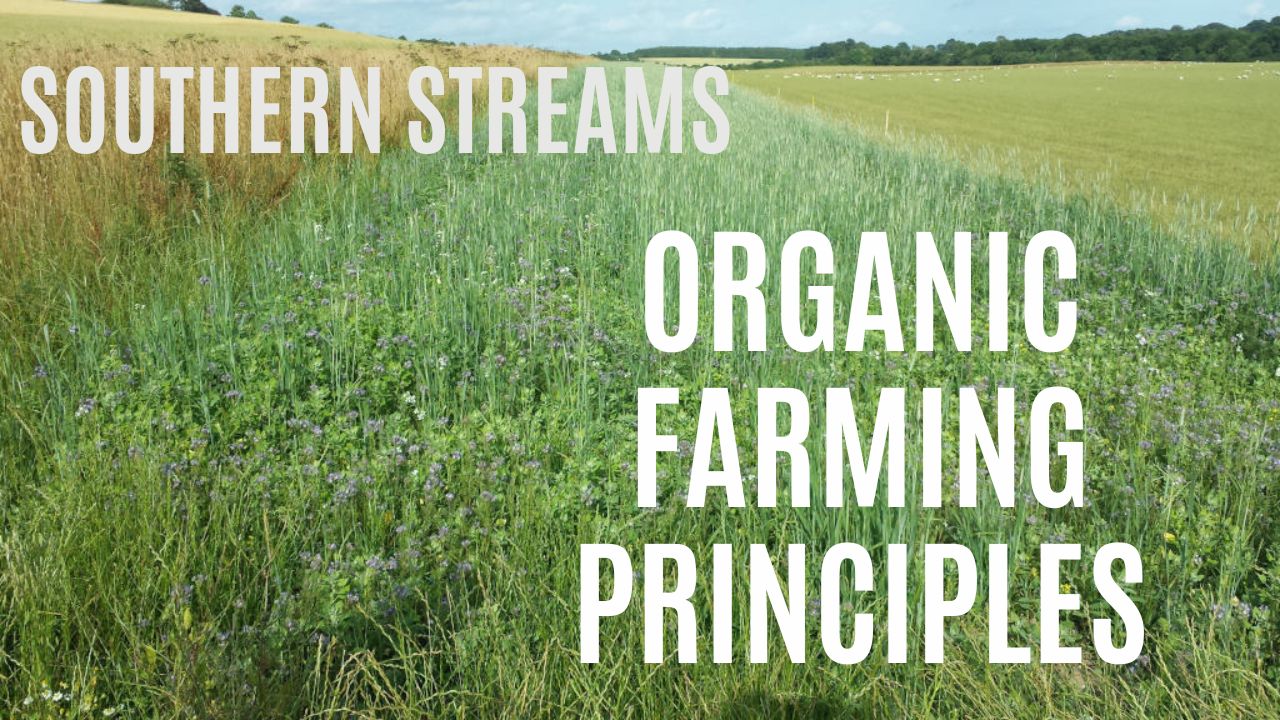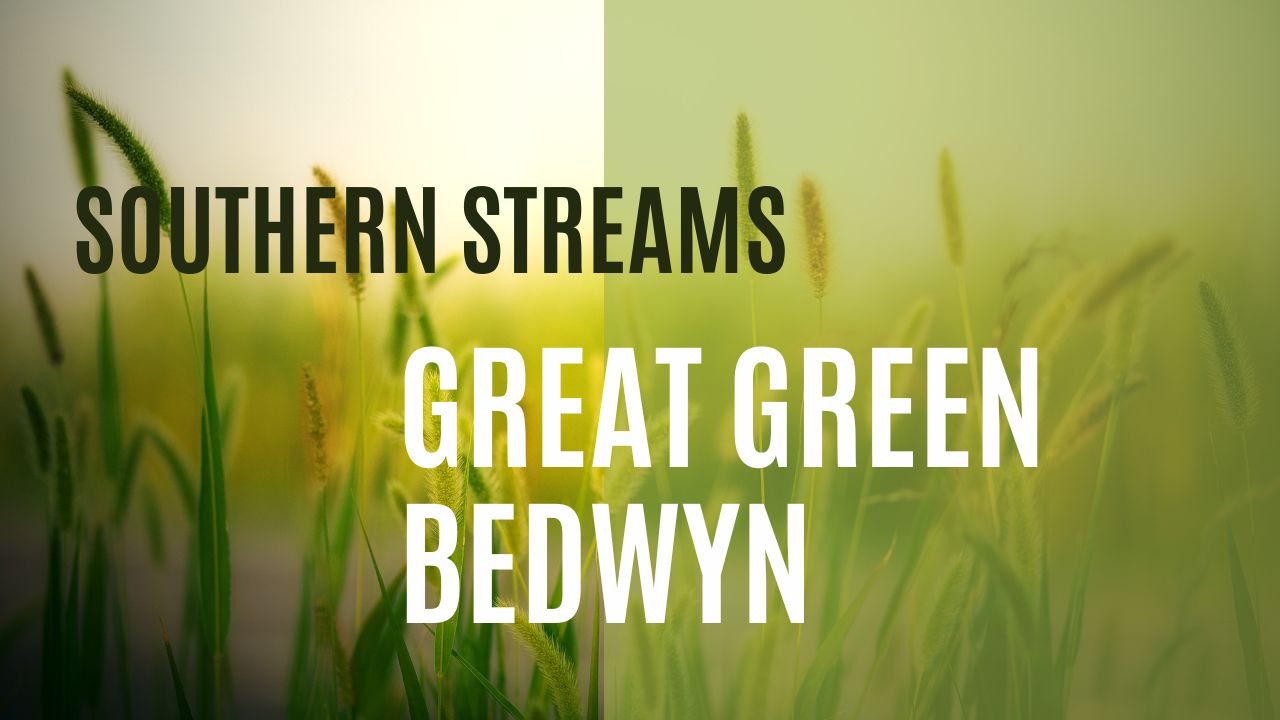Member Article
Regenerative Farming at Wexcombe Farm
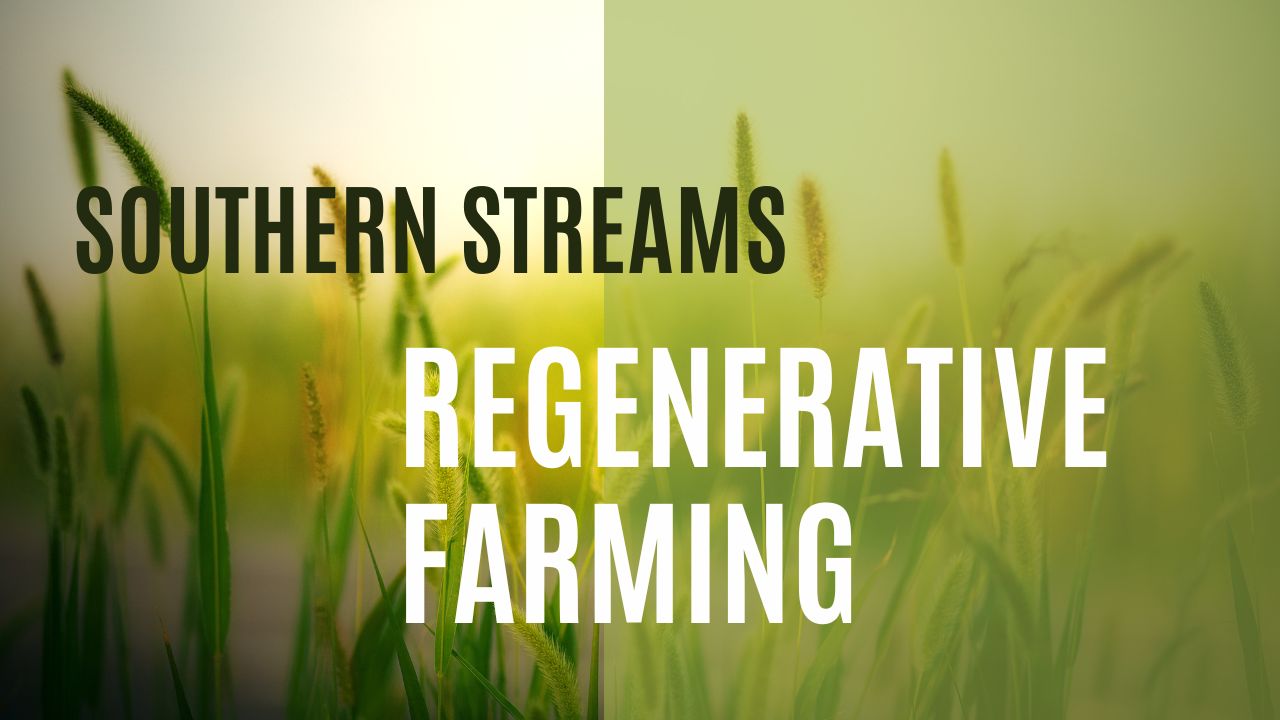
The term ‘Regenerative Farming’ is becoming omnipresent within the farming industry. Yet there is no real definition. For me it refers to practices that aim to regenerate a previously denuded resource, most commonly soil.
There are five principles that I follow to help make decisions which will lead to improvements in soil health and thus wider environmental health:
- Keep the soil covered at all times (protecting it from the eroding effects of the weather).
- Minimise disturbance; both physical, in terms of ploughing and other tillage, and chemical.
- Increase diversity in terms of what we grow and how and when we manage what we grow.
- Keep living roots in the ground growing as much as possible.
- Integrate livestock into the whole system.
For the last ten years at Wexcombe, we have made a number of changes, all designed to improve the health of our soils. In 2013 I started looking into reducing our cultivations in order to reduce costs. This research led me into the world of soil health and how a properly functioning soil is alive, with more living organisms in a teaspoonful than humans alive today. The microbes in a healthy soil are diverse and have evolved with plants to form symbiotic relationships benefiting one another. The key to soil health are these soil dwelling microbes. They need to be fed and housed. Feeding on sugars which plant roots exude in a symbiotic trade, an undisturbed, well-structured soil is their home.
We sold all of our tillage equipment (ploughs and cultivators) in 2014, and started planting everything directly into the previous crops residues. Whenever we don’t have a cash crop growing for more than 6 weeks, a diverse, multi-species cover crop is grown. This protects the soil, feed the soil microbes and provide extra grazing for our cattle.
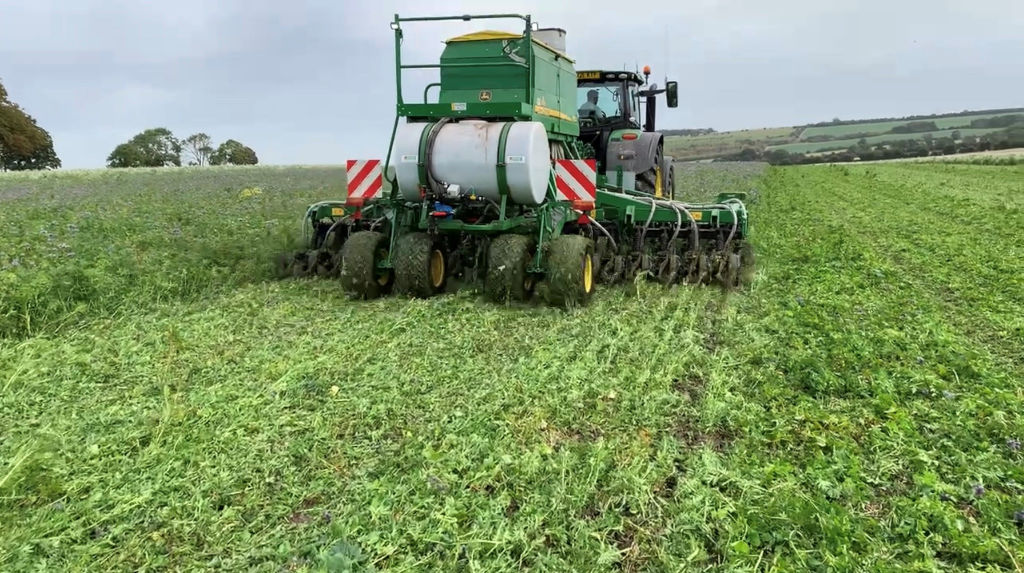
The temporary grass that we grow is now a diverse mix of up to 20 different grasses, herbs and legumes. To better mimic wild herds of herbivores our cattle are mobbed together in one big group and moved daily.
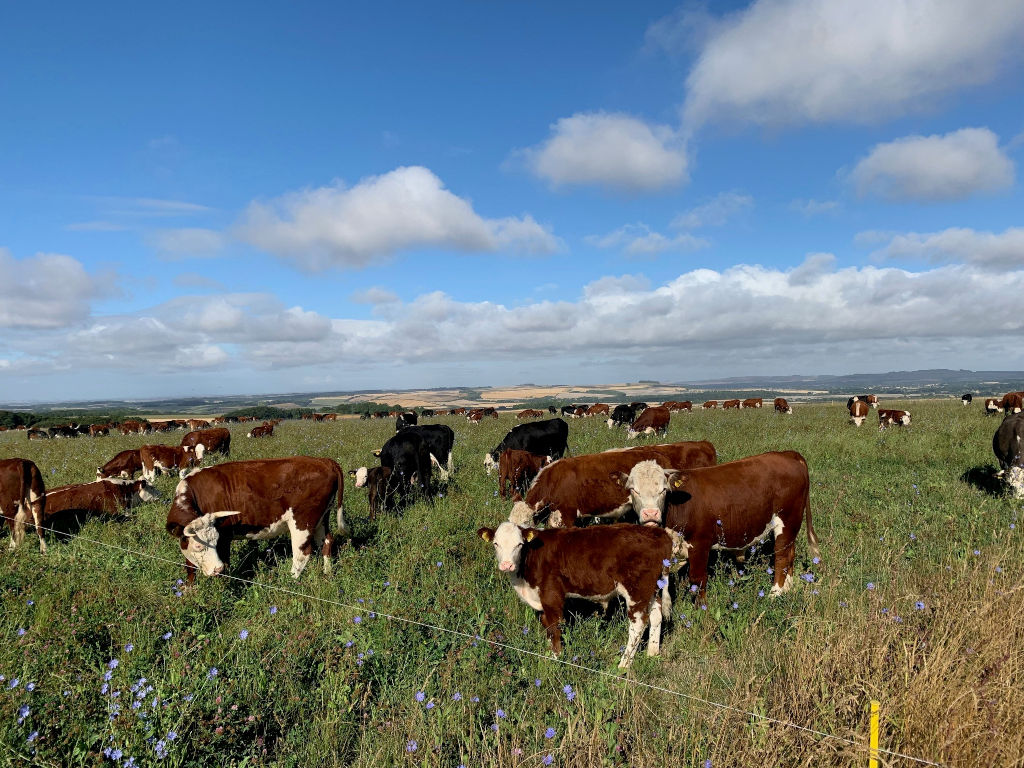
We have also started to cut our chemical usage. We now use less than half of the fertiliser, fungicides and diesel that we used in 2013.
With all of these changes, we have started to see improvements in crop health, animal health, soil health and wildlife. There is hopefully more to come as we look to increase the diversity in our livestock enterprises. We are also finding new markets for our produce, this year we are growing a wheat and bean mixture for a regenerative farming group called “Wildfarmed” who are marketing wheat flour grown with less inputs and more diversity.
